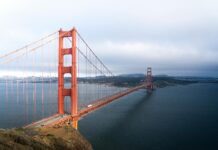Embarking on a Denver to Las Vegas road trip promises an exhilarating adventure filled with breathtaking landscapes, vibrant cities, and unforgettable experiences. If you’ve ever wondered how to make the most out of this iconic journey, you’re in the right place! This ultimate guide to an exciting road trip adventure will reveal insider tips, must-see attractions, and the best routes to take, ensuring your trip is nothing short of spectacular. Ready to discover the hidden gems between Colorado and Nevada? Let’s dive in!
Traveling from Denver to Las Vegas by car isn’t just about reaching the destination; it’s about embracing the journey itself. Imagine cruising through the majestic Rocky Mountains, stopping at charming small towns, and witnessing the vast deserts of the Southwest. But wait, did you know there are secret scenic routes and thrilling detours that most travelers miss? Whether you’re a nature lover, a history buff, or a thrill-seeker, this road trip has something for everyone. From the vibrant nightlife of Las Vegas to the cultural richness of Denver, this guide covers all you need to plan your best Denver to Las Vegas road trip itinerary.
Wondering how long does it take to drive from Denver to Las Vegas or where to stop for the most Instagram-worthy photos? We got you covered! This comprehensive guide dives into everything, including top roadside attractions, budget-friendly tips, and safety advice. So, buckle up and get ready for a road trip adventure packed with excitement, discovery, and memories that will last a lifetime!
Top 7 Must-See Attractions on Your Denver to Las Vegas Road Trip Adventure
Planning a road trip from Denver to Las Vegas? Well, you are in for a memorable adventure filled with breathtaking landscapes, vibrant cities, and unique attractions along the way. This route covers roughly 750 miles and offers so many must-see spots that could turn your ordinary drive into an extraordinary journey. Whether you are a nature lover, history buff, or just someone looking for some fun, this road trip got you covered. Here’s the ultimate guide to the top 7 attractions you should not miss on your Denver to Las Vegas road trip adventure.
1. Garden of the Gods – Colorado Springs, CO
Just about an hour south of Denver, Garden of the Gods is a natural park that offers stunning red rock formations. The towering sandstone rocks rise dramatically against the blue Colorado sky, making it a perfect spot for photography, hiking, or even rock climbing. The park have several trails, picnic areas, and a visitor center with interesting exhibits about the geology and history of the area.
- Free entrance to the park
- Walking trails range from easy to moderate difficulty
- Great spot for families and solo adventurers alike
This place is also historically significant, as the land was considered sacred by Native American tribes before becoming a public park.
2. Royal Gorge Bridge and Park – Canon City, CO
A bit off the direct path but totally worth the detour, the Royal Gorge Bridge is one of the highest suspension bridges in the world. Spanning over the Arkansas River, the bridge offers jaw-dropping views of the deep gorge below. Besides the bridge, the park has zip lines, gondola rides, and a small museum that share the story of the gorge’s formation and the bridge’s construction.
Main highlights include:
- 1,260 feet long suspension bridge
- Thrilling zip line across the gorge
- Educational exhibits about local wildlife and geology
If you happen to visit during summer, there are often special events and festivals held here.
3. Great Sand Dunes National Park – Mosca, CO
Driving further southwest, you’ll hit the Great Sand Dunes National Park, home to the tallest sand dunes in North America. The vast sea of sand is unlike any other natural feature you’ll encounter on this route. Visitors can try sandboarding, sledding, or just hike up the dunes to enjoy spectacular views of the Sangre de Cristo Mountains.
Things to know:
- Dunes reach heights of up to 750 feet
- Park includes diverse ecosystems like wetlands and forests
- Best visited during spring and fall to avoid extreme heat
It’s a great place to camp if you want to experience the desert night sky.
4. Durango and the Durango & Silverton Narrow Gauge Railroad – Durango, CO
Durango is a charming town with a rich mining history and a lively downtown filled with shops and restaurants. What makes it special is the Durango & Silverton Narrow Gauge Railroad, a historic steam train that runs through the San Juan Mountains. The train ride offers nostalgic views of rugged cliffs, pine forests, and rushing rivers.
Key features:
- Train travels 45 miles between Durango and Silverton
- Operates seasonally, check schedules before planning
- Great for history enthusiasts and train lovers
Durango itself also has many museums and outdoor activities like fishing and hiking.
5. Monument Valley Navajo Tribal Park – Utah/Arizona Border
Crossing into Utah, Monument Valley is iconic for its vast red sandstone buttes that have been featured in countless western movies. This Navajo Tribal Park offers guided tours that explain the cultural significance and geological history of the area. Driving through the valley, you get a sense of the American Southwest’s timeless beauty.
Tour tips:
- Only Navajo guides allowed to drive into certain areas
- Photography enthusiasts will be in heaven here
- Sunrise and sunset provide the best lighting for photos
Make sure to respect local customs and restrictions during your visit.
6. Valley of Fire State Park – Overton, NV
As you near Las Vegas, the Valley of Fire State Park is a must-see for its brilliant red sandstone formations and ancient petroglyphs. The park gets its name from the fiery appearance of the rocks when hit by sunlight. Visitors can explore hiking trails, picnic spots, and the visitor center which has interesting exhibits about the area’s prehistoric inhabitants.
Highlights include:
- Over 40 miles of hiking trails
- Petroglyphs dating back over 2,000 years
- Camping facilities available for overnight stays
This park is perfect for a day trip and offers a peaceful contrast to the busy Vegas Strip.
7. Welcome to Fabulous Las Vegas Sign – Las Vegas, NV
No road trip to Las Vegas would be complete without stopping at the famous “Welcome to Fabulous Las Vegas” sign. Located at the south end of the Strip, this iconic landmark is a popular photo spot for travelers arriving in the city.
How to Plan the Perfect Denver to Las Vegas Drive: Insider Tips and Route Ideas
Planning a road trip from Denver to Las Vegas is one of those adventures that everyone should try at least once. The journey covers around 750 miles, taking about 11 to 13 hours depending on your route and stops. But driving from Denver to Las Vegas isn’t just about getting from point A to B. It’s about the sights you see, the food you try, and the memories you make along the way. This guide will share some insider tips, route ideas, and practical advice to help you plan the perfect Denver to Las Vegas drive.
Why Drive from Denver to Las Vegas?
People usually fly, but driving gives you freedom to explore hidden gems along the way. Denver to Las Vegas road trip lets you experience the changing landscapes from Rocky Mountains to desert canyons. The route offers a mix of urban stops, historic towns, and natural wonders. Plus, if you traveling with friends or family, a road trip creates bonding moments that no flight could provide.
Choosing Your Route: Main Options from Denver to Las Vegas
There are mainly two popular routes for Denver to Las Vegas drive:
Via I-70 West and I-15 South (Approximately 750 miles)
- Start on I-70 West from Denver through the Rocky Mountains
- Pass through towns like Glenwood Springs and Grand Junction
- Connect to I-15 South near Utah
- Continue to Las Vegas
Via US-50 West and I-15 South (Approximately 780 miles)
- Take US-50 West from Denver through Colorado’s scenic byways
- Pass through towns like Salida, Montrose, and Grand Junction
- Join I-15 South near Utah border
- Continue to Las Vegas
Each route has its pros and cons. I-70 is faster and better for mountain scenery lovers but can be busy and has steep parts. US-50 is slower but more peaceful and offers access to some less touristy spots.
Must-See Stops Along the Way
Planning your stops can turn a long drive into a memorable adventure. Here’s a list of recommended places to check out:
Glenwood Springs, CO
Famous for its hot springs, this town is a good place to relax after a few hours driving. The Glenwood Caverns Adventure Park offers caves tours and thrilling rides.Grand Junction, CO
Known for its vineyards and the Colorado National Monument, it’s an excellent spot for wine tasting or a scenic drive through red rock canyons.Moab, UT
This town is a gateway to Arches National Park and Canyonlands National Park. You can hike, bike, or just admire the stunning rock formations.St. George, UT
A good rest stop with pleasant weather and close to Zion National Park for those who want to detour for hiking or sightseeing.Mesquite, NV
Closer to Vegas, Mesquite offers casinos and golf courses, a lighter alternative to the hustle of Las Vegas.
Practical Tips for Your Denver to Las Vegas Road Trip
Driving long distances requires some preparation. Here’s some advice for a smoother trip:
- Check your vehicle before leaving, including tires, oil, and brakes. You don’t want car troubles in remote areas.
- Pack essentials like water, snacks, first aid kit, and a physical map (in case GPS fails).
- Plan your fuel stops carefully—some stretches have few gas stations, especially in Utah and Nevada deserts.
- Be aware of weather conditions—mountain passes on I-70 can get snowy or icy in winter, which could delay your trip.
- Book accommodations in advance if you want to stop overnight in popular towns. Last-minute hotels can be expensive or fully booked.
- Have some cash on hand as some small towns and attractions might not accept cards.
Comparing Driving vs Flying from Denver to Las Vegas
| Aspect | Driving | Flying |
|---|---|---|
| Duration | 11-13 hours (depends on route) | About 2 hours flight |
| Cost | Gas, food, lodging | Flight tickets + airport transfers |
| Experience | Scenic views, flexible itinerary | Fast, convenient |
| Stops & Exploration | Multiple sightseeing opportunities | Limited to airports |
| Comfort | Can be tiring, but private | More comfortable but less flexible |
If you want a quick trip, flying is best. But for those who enjoy the journey as much as the destination, driving wins hands down.
What to Pack for This Road Trip
Packing light but smart is important for a multi-day drive:
- Comfortable clothes and shoes for hiking or city strolls
- Sunglasses and sunscreen to protect from desert
Best Scenic Stops and Hidden Gems Between Denver and Las Vegas You Can’t Miss
Traveling from Denver to Las Vegas by car is one of those road trips that every adventurer should experience at least once. The journey covers about 750 miles and takes you through some of the most breathtaking landscapes in the American West. But it’s not just about reaching the destination quickly; the real joy lies in discovering the best scenic stops and hidden gems along the way that you can’t miss. If you ever thinking about a Denver to Las Vegas trip, this guide will give you the ultimate rundown on where to pause, explore, and soak in the wonders.
Why Drive From Denver to Las Vegas?
Driving from Denver to Las Vegas means you get a front-row seat to the diversity of landscapes—from the Rocky Mountains to the high desert plains. Unlike flying, road trips let you control the pace, stop wherever feels right, and uncover places that many travelers rush past. Plus, the route connects many historical sites, natural parks, and quirky towns that make the hours on the road totally worth it.
Must-See Scenic Stops Between Denver and Las Vegas
Here are some top scenic stops you shouldn’t overlook if you want to make the most of your journey:
Garden of the Gods, Colorado Springs, CO
This is a beautiful park known for its towering red sandstone rock formations. You can hike, bike, or just drive through the park and enjoy the views. The backdrop of Pikes Peak makes it even more stunning.Great Sand Dunes National Park, Colorado
Home to the tallest sand dunes in North America, this place feels like a desert wonderland. Bring a sled or just climb the dunes for panoramic views. The Medano Creek runs here in spring, offering a unique aquatic experience in the desert.Black Canyon of the Gunnison National Park, Colorado
You might not heard much about this park but it is impressive with its steep cliffs and dramatic views. It’s less crowded than some other national parks, so it’s perfect for peaceful hikes and photography.Arches National Park, Utah
Famous for its natural sandstone arches, this park is a must-stop for anyone traveling west. Delicate Arch is the iconic highlight, but there are hundreds of other formations that will take your breath away.Monument Valley, Utah/Arizona Border
The classic symbol of the Wild West. The red mesas and buttes here have appeared in countless movies. Even if you don’t do the guided tours, the view from the visitor center alone is unforgettable.
Hidden Gems Along the Route
Besides the well-known parks, there are lesser-known spots that offer unique experiences:
Royal Gorge Bridge and Park, Colorado
This is one of the highest suspension bridges in the world. Walking across it gives you a vertigo-inducing view of the gorge below. It’s a thrilling stop that’s not too far off your route.Goblin Valley State Park, Utah
Filled with weird, mushroom-shaped rock formations called hoodoos, Goblin Valley feels like you stepped onto another planet. It’s a fantastic place for families and photographers alike.Valley of Fire State Park, Nevada
Just about an hour outside Las Vegas, this park is known for its bright red Aztec sandstone formations and petroglyphs dating back thousands of years. It’s often overshadowed by the big national parks but totally worth a visit.Little Wild Horse Canyon, Utah
A slot canyon that’s less crowded than the famous Antelope Canyon but just as beautiful. It’s a moderate hike that lets you explore narrow, twisting rock corridors.
Practical Tips for the Road Trip
Driving from Denver to Las Vegas isn’t just about the stops, you gotta prepare well:
Best Time To Go: Spring and fall offers the best weather. Summer can be very hot, especially in the desert areas near Las Vegas. Winter might bring snow in the Rockies, making some routes tricky.
Fuel and Food: Some stretches between towns are long and sparse. Make sure fill up your tank when you can and carry snacks and water.
Accommodations: Booking in advance is recommended, especially near popular parks. Camping is also a great option in many of these spots if you prefer nature.
Permits and Fees: Many parks require entrance fees or permits. Check official websites beforehand to avoid surprises.
Comparing Routes: Interstate 70 vs. Scenic Byways
There are two main ways to get from Denver to Las Vegas by car:
Interstate 70 Route
- Fastest and most direct
- Passes through Denver, Grand Junction, then south through Utah
- Lots of amenities and services along the way
- Includes some great stops like Arches National Park and Black Canyon
Scenic Byways Route (More adventurous)
- Takes smaller
What to Pack for a Denver to Las Vegas Road Trip: Ultimate Checklist for First-Timers
Planning a road trip from Denver to Las Vegas is an exhilarating idea for first-timers and seasoned travelers alike. This journey covers roughly 750 miles and takes you through some of the most diverse landscapes in the American West. From the Rocky Mountains to the deserts of Nevada, the drive offers spectacular views, historic towns, and plenty of opportunities for adventure. But before hitting the road, it is important to know exactly what to pack for a Denver to Las Vegas road trip. Without proper preparation, you might find yourself stuck without essentials or missing out on some fun experiences.
Why Choose a Road Trip from Denver to Las Vegas?
Driving from Denver to Las Vegas is not just about the destination, but the adventure along the way. Unlike flying, a road trip allows you to stop whenever you want, explore hidden gems, and enjoy the changing scenery. The route passes through Colorado’s mountainous terrain, Utah’s red rock canyons, and Nevada’s expansive deserts. This diverse geography means you must prepare for different weather conditions and environments, making your packing list very important.
Historically, this corridor has been a vital passage for travelers and settlers moving westward. Towns like Grand Junction, Moab, and St. George offer cultural and natural attractions that are worth exploring. So, packing smart makes your trip easier, safer, and more enjoyable.
Essential Items to Pack for Your Denver to Las Vegas Road Trip
Here is a checklist of must-haves for your first road trip between these two cities. This list mixes practical travel gear, clothing, and safety items that make your journey comfortable.
- Navigation Tools: GPS device or smartphone with offline maps downloaded. Paper maps as a backup (in case the signal drops).
- Clothing: Layers are key. Denver can be chilly, while Las Vegas is often hot. Pack T-shirts, a warm jacket, hiking boots, and swimwear.
- Food and Water: Non-perishable snacks like granola bars, nuts, and dried fruit. Plenty of water bottles (at least 2 gallons per person for the desert stretches).
- Car Essentials: Spare tire, jack, jumper cables, motor oil, and a basic tool kit.
- Documents: Driver’s license, vehicle registration, insurance papers, and hotel reservations.
- Emergency Kit: First aid kit, flashlight with extra batteries, emergency blankets, and multi-tool knife.
- Entertainment: Audiobooks, playlists, and travel games for long stretches.
- Sun Protection: Sunglasses, sunscreen, hats, and lip balm with SPF.
Weather Considerations: Packing for Changing Climates
One of the trickiest parts about traveling from Denver to Las Vegas is the drastic weather changes. Denver sits at a high elevation, sometimes experiencing snow or cold winds, especially during spring and fall. Meanwhile, Las Vegas is known for its scorching desert heat. It is wise to pack clothing that can be layered, such as:
- Lightweight breathable shirts and shorts for Las Vegas
- Warm sweaters, fleece jackets, and a rain jacket for Denver and mountain stops
- Comfortable hiking shoes for outdoor activities along the route
- A hat and scarf if you plan to visit higher altitudes or go hiking
Don’t forget to check the weather forecast before your trip, but always expect surprises!
Route Highlights and What to Bring for Each Stop
The drive from Denver to Las Vegas can be broken down into segments, each offering unique attractions and thus requiring slightly different preparations.
Segment 1: Denver to Grand Junction (approx. 250 miles)
This part takes you through the Rocky Mountains. You’ll want to have hiking gear if stopping at places like Glenwood Springs or Colorado National Monument. Pack a camera and binoculars for wildlife watching.
Segment 2: Grand Junction to Moab, Utah (approx. 110 miles)
Moab is famous for Arches and Canyonlands National Parks. Bring sturdy hiking boots, plenty of water, and sun protection. Camping gear is also recommended if you want to stay overnight in the parks.
Segment 3: Moab to St. George, Utah (approx. 260 miles)
This stretch crosses a desert landscape where temperatures can soar during summer. Pack light clothing, an emergency cooling towel, and extra water.
Segment 4: St. George to Las Vegas (approx. 120 miles)
The final leg is a short drive through desert terrain. Sunglasses and hydration are musts. If you plan to explore Las Vegas nightlife, pack comfortable evening wear.
Comparing Road Trip vs. Flying: Why Road Tripping is Worth It
Some might wonder if driving the distance is better than flying. While a flight takes about two hours, the road trip gives you freedom and flexibility. You stop to enjoy the scenery, eat at quirky diners, or visit small towns that don’t get much tourist attention. Plus, traveling by car allows you to carry more gear and take
How to Save Money and Maximize Fun on Your Denver to Las Vegas Road Trip Journey
Embarking on a road trip from Denver to Las Vegas promises an exciting adventure filled with scenic views, unique stops, and unforgettable memories. However, many travelers worry about the expenses piling up and missing out on the fun along the way. If you are wondering how to save money and maximize fun on your Denver to Las Vegas road trip journey, you are in the right place. This ultimate guide will help you plan smart, spend less, and enjoy more on your route westward.
Planning Your Route Smartly: Denver to Las Vegas Road Trip Basics
The drive from Denver, Colorado to Las Vegas, Nevada covers about 750 miles, usually taking around 11 to 12 hours of direct driving. But who wants to rush such a legendary road trip? The journey is best enjoyed by breaking it down into smaller segments, and exploring stops that add value without draining your wallet.
There are two main routes you can take:
- I-70 West to I-15 South: This is the most common and scenic route passing through mountains, desert landscapes, and small towns.
- US-50 West: A more adventurous, less-traveled path that offers historic towns and wide-open spaces.
Choosing your route early helps you plan fuel stops, meals, and sightseeing more efficiently.
Save Money on Fuel and Food
Gas will be one of the biggest expenses on this trip, but you can minimize it by doing some simple things:
- Use apps like GasBuddy to find cheapest fuel prices along your route.
- Fill up in larger cities like Grand Junction or St. George, where prices tend to be lower than remote areas.
- Keep your vehicle well-maintained with proper tire pressure and oil changes to improve mileage.
- Pack snacks and drinks from home rather than buying expensive convenience store items on the road.
Food can add up quick if you eat out for every meal. Consider packing a cooler with sandwiches, fruits, and bottled water. Stopping at grocery stores in towns like Glenwood Springs or Cedar City can save you a ton compared to restaurants.
Must-See Stops Without Breaking the Bank
There are many incredible attractions along the Denver to Las Vegas road trip that are free or very cheap.
- Colorado National Monument (near Grand Junction): Stunning red rock formations and scenic overlooks. Entrance fee is modest, and the views are priceless.
- Arches National Park (near Moab): Famous for its natural sandstone arches. Entrance fee is around $30 per vehicle but well worth it.
- Zion National Park (near Springdale, Utah): One of the most beautiful parks in the US. Shuttle service is free, and hiking trails vary from easy to challenging.
- Valley of Fire State Park (near Las Vegas): Nevada’s oldest and largest state park with vibrant rock formations and petroglyphs. Entry fee is around $10 per vehicle.
Visiting these places not only adds to your trip’s fun but gives you a chance to stretch your legs and enjoy nature without spending a fortune.
Accommodation Tips: Sleep Cheap, Sleep Well
Road trips usually require overnight stops, and accommodation can be pricey in popular areas. To save money:
- Consider camping at national or state parks. Campsites are often under $20 a night.
- Book motels outside city centers where prices drop significantly.
- Use booking apps like HotelTonight or Airbnb for last-minute deals.
- Share rooms if you traveling with friends or family to split costs.
For example, a night in a motel in Grand Junction might cost $70-$90, while camping nearby could be less than $20. Weigh your comfort needs against savings.
Fun Activities and Entertainment on a Budget
Don’t think you need to spend big to have fun. Here are some low-cost or free activities to enjoy during your trip:
- Explore local diners and small town shops for unique souvenirs and meals.
- Take photos at scenic viewpoints along I-70 and I-15.
- Hike short trails near towns you stop for meals.
- Visit museums with free admission days—some small towns have fascinating local history museums.
- Listen to road trip playlists or podcasts to entertain everyone without spending a dime.
Quick Comparison: Road Trip vs. Flying
Many think flying is faster and cheaper between Denver and Las Vegas, but road tripping can be more economical and fun if you plan well.
| Aspect | Road Trip | Flying |
|---|---|---|
| Cost | Moderate (gas, food, lodging) | Variable (tickets, baggage fees) |
| Flexibility | High (stop anywhere anytime) | Low (fixed schedules) |
| Experience | Scenic, personal adventure | Quick, less scenic |
| Luggage | No extra fees | Often charged |
Conclusion
Traveling from Denver to Las Vegas offers an exciting journey filled with diverse landscapes, vibrant city experiences, and numerous travel options to suit different preferences and budgets. Whether you choose to drive through scenic routes, fly for convenience, or explore by bus or train, each mode of transportation provides unique opportunities to enjoy the stunning southwestern scenery. Las Vegas, known for its dazzling entertainment, world-class dining, and lively nightlife, promises an unforgettable destination after your journey. Planning ahead by considering travel time, costs, and personal interests can help make your trip smooth and enjoyable. As you prepare for your adventure from the Mile High City to the Entertainment Capital of the World, embrace the excitement of discovery and the thrill of new experiences. Start planning your trip today and get ready to create lasting memories on your Denver to Las Vegas escape!











